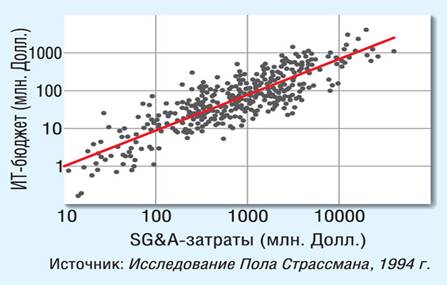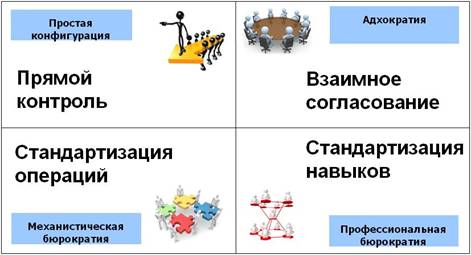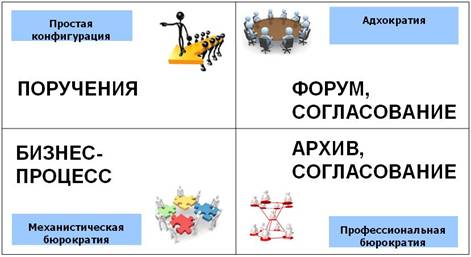Why do EDMSs work poorly?
INTRODUCTION
In 1991, I was a student at one of the enterprises in the field of energy. The task that I had to solve was to develop a program to control the instructions issued by managers. The program was called "Instrumentation - Monitoring Compliance." As it seemed to me then, I solved the problem. It was difficult to assume that I had to return to this topic in 12 years and turn it into the main subject of my activity - the development and implementation of electronic document management systems. 20 years later, it turned out that this topic was just as relevant, and attempts to solve it, far from always lead to the expected results. Why is this happening?
There are probably many reasons. Time and budget constraints, staff qualifications and motivation, project methodology, political conditions - these and other factors contain the prerequisites for project failures. I want to offer one more explanation of the problems that arise during the implementation and operation of electronic document management systems.
TERMS AND DEFINITIONS
Denote the terms that will be found later.
By ARD (organizational and administrative workflow), we understand the processing of documents serving the management activities of the company - incoming and outgoing letters, orders, orders, instructions, memos.
By the term “document management of operational activities” we mean the processing of documents specific to the field of activity in which the company operates. For example, for insurance companies, this may be processing insurance policies, for banks, processing loan applications and so on.
The concept of EDMS - electronic document management system - covers all types of document management companies. But in most cases, it is used to designate systems that automate the ARD, contractual activities, sometimes accounting and personnel documents. To a lesser extent, this term is used for document automation systems for companies operating activities.
This division is very arbitrary, but it will help us to place emphasis in considering the problems that accompany the processes of implementation and operation of systems that automate the workflow of companies.
PROBLEMS OF PROJECTS
I began to participate in projects for the introduction of electronic document management systems in 2003. Gradually, my attention was drawn to the fact that all projects are carried out according to one scenario and in most cases lead to the same problems. This happened regardless of the customer’s company, budget size or the composition of the project team members.
A typical EDMS implementation project began by identifying the types of documents to be automated and describing the business processes for processing each type of document. The main part of the technical task was the document route diagrams, and the core of the system was one or more business processes that automate the routes described. Everything looked beautiful at the development stands, but as soon as the implementation of the system began, problems appeared.
Problem 1. Typical routes not followed
The first significant problem that the project team faced was that document routes — designed, agreed, and implemented — were not followed. It turned out that the company has a sufficient number of exceptions, without which the introduction of the system is impossible. The implementation of these exceptions led not only to delaying the time, increasing the complexity and budget, but, most unpleasantly, to violating the architecture of the system. If before the start of the implementation, the document processing processes looked streamlined, then by the end of the implementation it might turn out that there is no clear business process at all. Documents go from any stage to any stage, and employees whose role was not provided for in the routes may be involved in the processing process.
Problem 2. The increase in the volume of workflow
The next nuisance turned out to be that after the automation of the ARD, the volume of documents processed by employees increases. At the same time, an increase in the general document flow of the company was not observed. This circumstance was often explained by the specifics of the company’s work before and after the introduction of the EDMS. For example, a typical situation was when the head gave the documents to the executors, through the head of his deputies, and without registering the fact of the transfer with the office. Another example is when the head of the unit transferred the service notes received to him for processing by employees only after a second contact with him with the same question. Memo notes that weren’t reminded of him were safely sent to the trash. In both cases the introduction of business processes of document processing excluded the withdrawal of documents from routes and forced all employees to process all documents intended for them. Which led to an increase in the volume of document processing by employees.
Problem 3. Task queue overflow
The architecture of most workflow systems is based on business processes. The concept of work of employees in this case is based on the principles of work with a task queue. Events that occur during the movement of documents - these are tasks placed in the inbox, which users must process sequentially. Employees are turning into queuing systems, the purpose of which is to clear the queue. This principle of operation is far from suitable for all user roles. Gradually, employees begin to ignore some of the events. In the future, this leads to an overflow of task queues, which becomes another reason for reducing system performance.
Problem 4. Growth in transaction costs
Once, while analyzing the results of workflow automation projects over several years of implementation, we made an unexpected generalization. Traditional EDMS, automating the organizational and administrative workflow of companies required more time, resources, budget; customers made higher demands on the user interface, while customer satisfaction was low. At the same time, projects that automate the business processes of the customer’s operational activities were faster, easier, and despite the simpler user interfaces, customer satisfaction was significantly higher. We came to the conclusion that one of the reasons for this state of affairs is the target orientation of the systems.
Automation of the processes of the company’s operations is oriented, first of all, at reducing the laboriousness of the work performed by employees, at accelerating the process and simplifying the way to achieve the result. In other words, to reduce transaction costs of the process of operating activities and increase labor efficiency. Automation of the ARD processes, as a rule, solves other tasks - information content, reporting, preserving the history of document processing, control over the actions of employees, etc. As a result of solving these problems, it turns out that the introduction of EDS does not simplify the work, but rather leads to an increase in labor costs for performing the same operations. It became clear why the great honor of the leaders after the introduction of the EDMS transferred their functions of work in the system to the secretaries - the EDMS made their work less efficient.
Do I need an EDMS?
Implementation experience, as a result of which we received systems that complicate the work of employees with productivity and fault tolerance problems, suggested that EDMS is evil. Business does not receive returns, does not become more effective. Does it make sense to implement them at all? It remained unclear why, given the large number of controversial implementations, however, the demand for workflow automation is increasing every year. Obviously, the real need for solving the problems of working with documents still exists, but it is necessary to find a way to properly satisfy this need. The solution to this issue came gradually. The key to understanding was the experience of several successful implementations of electronic document management.
WORKING ELECTRONIC DOCUMENT TURNOVER
Coordination of design documentation
One of the first examples of the successful use of electronic document management systems was the implementation of the project documentation approval process.
The project team was faced with the task of automating the workflow of the operational activities of one of the companies on the EMC Documentum platform. The tight deadlines of the project did not allow replacing the traditional, not very friendly platform interface with your own. Understanding that during the implementation of the system we will not be able to avoid a negative reaction of users to the interface, we needed a tool to reduce customer expectations. The way out of this situation was the decision to accustom key users to the platform interface even before the introduction of the system - during the project. For this, a project archive was created on the basis of the Documentum platform, in which all work with documents was organized, including the process of coordinating project documentation. We managed to achieve our goal. As a result, we got:
- Structured repository of design documentation. Each document was in its place, which reduced search time.
- In the project archive there were always the latest relevant documents.
- All versions of documents were saved, according to which at any time it was possible to restore the history of document changes.
- Coordination of documents was carried out only in the project archive, documents were not printed and were not sent by e-mail.
- There were results of coordination of documents by all participants of the project team, with their copies and corrections.
- There was up-to-date information on fulfilling the deadlines for the approval of documents.
At the same time, to organize this work, only the standard functionality of the EMC Documentum platform was used, without additional customization. It was also interesting that no business processes were used to organize the approval process. The effect, which was achieved with minimal effort, called for rethinking the existing experience in automating the procedures for working with documents and the processes for their coordination.
Accounting Outsourcing
Another example of the successful use of electronic document management was the solution to the problem of reducing accounting costs. The task was set to transfer accounting to outsourcing. The problem was the remoteness of the accounting department from the location of the primary accounting documents. It was necessary to find a way to quickly exchange documents between the company’s office and accounting in an environment where the office and accounting are in different cities. The solution was the organization of a structured document repository based on the Alfresco platform with the implementation of business rules for document processing. The result was a process:
- Upon receipt of the primary document, the employee scanned it and placed it in accordance with the nomenclature of cases.
- When saving the document, a business rule was launched that generates an email notification to the accountant with a link to the document in the repository.
- The results of processing the document and accounting it in the accounting system are reflected in the document card. If necessary, the accountant posted a response document, also in accordance with the nomenclature, the processing of which was carried out in a similar way.
The results exceeded all expectations. The company received a structured repository of all personnel documentation in electronic form. Exchange of documents took minimal time. Subsequent search and access to documents accelerated. Again, to achieve this result, mainly standard platform functionality was used. As in the first case, to organize the process of exchanging and processing documents, the business process tool was not involved.
The experience gained required answers to the questions:
Why, in some cases, the great effort spent on workflow automation leads to modest results and user dissatisfaction, while in others, the minimal costs produce a tangible effect, including economic?
How should the document management system be built so that its implementation leads to unconditional results for the company?
EVALUATION OF ECONOMIC EFFICIENCY
The answer to the first question can be found in the works of Paul Strassman - one of the leading experts in the field of evaluating the effectiveness of investments in information technology.

Paul Strassman - Emeritus Professor of Computer Science, George Mason School of Information Technology and Engineering; Researcher at the US Information Security Center; author of 8 books, more than 250 articles on information technology and the effectiveness of investments in information technology.
Since 1956 - CIO in companies: General Foods Corporation, Kraft Corporation, Xerox. In 1991-1993 - Director of Information Security at the US Department of Defense. In 2002 - CIO at NASA.
P. Strassman was a consultant on information systems of companies: AT&T, Citicorp, Digital Equipment, General Electric, General Motors, IBM, ING, SAIC, Shell Oil, Sun Microsystems, Texas Instruments.
Paul Strassman examined the open financial statements of more than 500 US companies, trying to find the relationship between the volume of costs in information technology and the economic performance of companies. The results of P. Strassman's research showed that there is no direct correlation between the IT budgets of companies and the target indicators of economic efficiency of the business. The figure shows a typical picture of the statistical relationship between the level of IT costs (the ratio of the IT budget to the company's revenue) and the level of return on assets (Return on Assets). A similar picture was observed in relation to other economic indicators.

At the same time, Paul Strassman found an indicator that had a positive correlation with IT costs. It turned out to be a group of costs for the management, administration and support of sales - Sales, General & Administrative (SG&A). SG&A includes the salaries of management, administrative staff and sellers, marketing and sales costs, as well as third-party management services. It turned out that an increase in management and sales costs is accompanied (in direct proportion!) By an increase in information technology costs.

From the research of Paul Strassman, it follows that information technology is primarily in demand in the areas of management and marketing. This means that IT should be aimed at improving management and sales. Accordingly andelectronic document management systems should solve the problem of reducing costs in the company and increasing the efficiency of the management system. Obviously, in this case we must observe the positive effect of the introduction of EDMS.
MANAGEMENT FORMS
Research by Paul Strassman explains the tasks that should be addressed by the introduction of electronic document management systems. But they do not answer the second question - what should be the EDMS to solve the tasks. To answer this question, we turn to the work of one of the leading experts in the field of management - Henry Mintzberg.

Henry Mintzberg is a professor of management at McGill University in Montreal. Professor at Carnegie Mellon Universities, d'Aix-Mardeill University, Ecole des hautes etudes commerciales, Montreal, London Business School and INSEAD. Winner of 15 honorary degrees from universities around the world.
G. Mintsberg - author of 15 books; more than 150 articles, two of which received the Harvard Business Review MacKinsey award.
According to The Wall Street Journal, G. Minsberg is one of the 10 most influential thinkers in the field of management.
In the 1970s, Henry Mintzberg set the goal to streamline the conclusions of researchers in the field of management, combining them into the overall picture of the structuring of organizations. The work took more than 3 years. The research results resulted in 512 pages of text in small print, containing conclusions about what makes the organization effective. The findings were supported by quotes from the work of other researchers.
G. Mintsberg found that despite all the variety of types of organizations that differ in size, scope, geography, capital, etc., management in all of them is based on only 5 basic forms, four of which are basic. These forms of management are:
- Direct control
- Mutual agreement
- Standardization of operations
- Standardization of skills
"Direct control" management form
With direct control, the responsibility for the work of all employees lies with one person. The leader coordinates the actions of his subordinates, issuing instructions and monitoring their implementation. In small organizations, all employees report directly to the head. In larger companies, a hierarchical structure is created, while maintaining the basic principle - management is based on teams from above.

Mutual Approval Management Form
With mutual coordination, control over the labor process is carried out by the employees themselves. This form of control is used in situations with a high degree of uncertainty. Responsibility for decision-making can take on each of the employees, coordinating their actions with the rest.

Management Standard for Operations
When standardizing operations, the activities of employees are divided into simple operations that do not require a complex thought process. The process of activity is strictly regulated. The activities of employees obey instructions that new employees can easily learn.

“Standardization of skills” management form
For areas of activity in which the result is unpredictable and requires highly qualified employees, standardization mechanisms of skills and knowledge are used. Achieving the result is ensured by the professional actions of employees specializing in certain areas. The company's task is to search, training, certification of specialists.

Organization Configurations
In organizations, as a rule, several forms of management are combined. At the same time, G. Mintsberg showed that each organization is dominated by one of the forms on which the company's operations are based. In accordance with the defining form of management, the organization can be attributed to one of the types:
- Simple configuration
- Adhocracy
- Mechanistic bureaucracy
- Professional bureaucracy

Examples of companies corresponding to the types of configurations:
Simple configuration (direct control) - small companies with access to local resources and distribution channels - small shops, farms, handicrafts, small travel companies; private companies with administrative support; personal relationship business; management companies.
Adhocracy (mutual agreement) - startups, design bureaus, innovative divisions within the framework of large companies, medical research centers, engineering companies, single and pilot production, sale of copyright works.
Mechanistic bureaucracy (standardization of operations)- large companies producing consumer goods, mass simple services; large retail chains; fast food enterprises.
Professional bureaucracy (standardization of skills) - audit companies, consulting firms, specialized medical centers, antique sales.
TYPES OF DOCUMENT CIRCULATION
The structuring of organizations, made by Henry Mintzberg, allows us to highlight the characteristic features for each type of organization. Contract activities, sales structure, work with personnel, incentive system, working hours, principle of communications, etc. - in each of the configurations have their own characteristics. Document flow for each type of organization also has its own specifics.
Simple configuration (direct control) - the basis of the workflow - instructions from managers. With the growth of the hierarchy - the growth of orders issued by documents. A large number of memos, which are a form of transfer of responsibility. Document approval is distributed across hierarchy levels.
Adhocracy (mutual agreement)- the basis of the workflow - documents of substantive activity. A large number of unstructured communications - forums, chats. Almost complete lack of instructions. Unstructured (collective) approval of documents.
Mechanistic bureaucracy (standardization of operations) - the basis of workflow - documents related to the company's operations. Document forms are clearly typed. The movement of documents is streamlined. Approval is structured by type of document and by section.
Professional bureaucracy (standardization of skills)- the basis of the workflow - documents of professional activity. Documents are structured by roles / professional areas of employees. To create new documents, employees use the material accumulated for their previous experience.

We note an important conclusion:
Each business configuration has its own type of workflow that supports the management structure and operational activities of the company.
ARCHITECTURE EDMS
Understanding the specifics of the workflow for each type of configuration, you can explain the problems that had to be encountered in projects. In most cases, the development of the system was based on the mechanism of business processes. At the implementation stage, a system with typed routes was issued. At the same time, the introduction of systems often took place in structures close to a simple configuration. The management form of a simple structure contradicts the principles that are embedded in the architecture of business processes. As a result, this leads to a violation of the stages of the process, a change of performers and non-compliance with the processing of documents.
The situation when the ECM platform is taken as the basis for the EDMS in such projects is even more deplorable. In this case, developers first have to adapt ECM to the system architecture based on business processes, and only then destroy the newly created architecture to meet the requirements of unstructured processes of simple configuration.
We have come to the answer to the question posed, what should be the electronic document management system of companies:
In order to avoid systemic problems when implementing electronic document management systems, it is necessary to choose an EDMS architecture that is suitable for the type of document management and company management form.
The figure shows typical system architectures that are most suitable for the types of company configurations.

For a simple structureThe main element of the EDMS architecture is the subsystem for issuing and monitoring orders. The most suitable architecture for such a system is the platform, which is based on the principles of electronic messaging. The manager should be able to issue an order at any time and in any place. The reporting system should provide complete information on the status of completed and outstanding orders.
For AdhocracyThe main element of the EDMS architecture should be an Enterprise Content Management (ECM) module with support for collaboration tools. The system should allow aggregating a large amount of information, and provide functional search tools. The system should be implemented means of teamwork with the support of forums, chats, news feeds.
For the Mechanistic bureaucracy, the main element of the EDMS architecture is the Business Process Management (BPM) module, which allows automating business processes of processing company documents. The workflow business process must strictly fit into the existing technological process of the company’s work, with predefined types of documents and routes for their movement.
For Professional bureaucracy, the main element of the EDMS architecture, as well as for adhocracy, is the Content Management Module (ECM) with support for individual work tools. The system should provide a means of structuring information, giving the user the ability to categorize documents and refer to their previous experience. The system should provide for the creation of document templates and contain standard templates for all user roles. The system should support informal means of document approval based on the life cycle of documents, as well as collective work tools that allow multiple users to work on a single set of documents as a team.
CONCLUSION
The proposed solution seems simple and applicable for ideal cases. In reality, organizations combine different forms of workflow. It is no coincidence that the fifth type of configuration proposed by G. Mintsberg is a divisional structure, which can include all four of the previous types. To meet the needs of such organizations, an EDMS is needed, which will combine several types of architectures, which will allow for the implementation of different types of workflow in one organization.
LITERATURE
- G. Mintzberg. The structure in the fist: the creation of an effective organization / Transl. from English under the editorship of Yu. N. Kapturevsky. - SPb .: Peter, 2004 .-- 512 p .: ill. - (Series “Business bestseller”). 18ВМ 5-469-00256-Х
- “Can IT measure the economic impact of IT?” PC Week / RE No. 4 (789) February 21, 2012. Posted by Olga Pavlova
- “In Search of Efficiency - Part 1”, Intelligent Enterprise No. 7 (201), 2009, Author: Ananyin V.I.
- "The formation of the architecture of the corporate information system through natural selection . " Intelligent Enterprise No. 17 (149), September 26, 2006. Author: Ananyin V.I.
